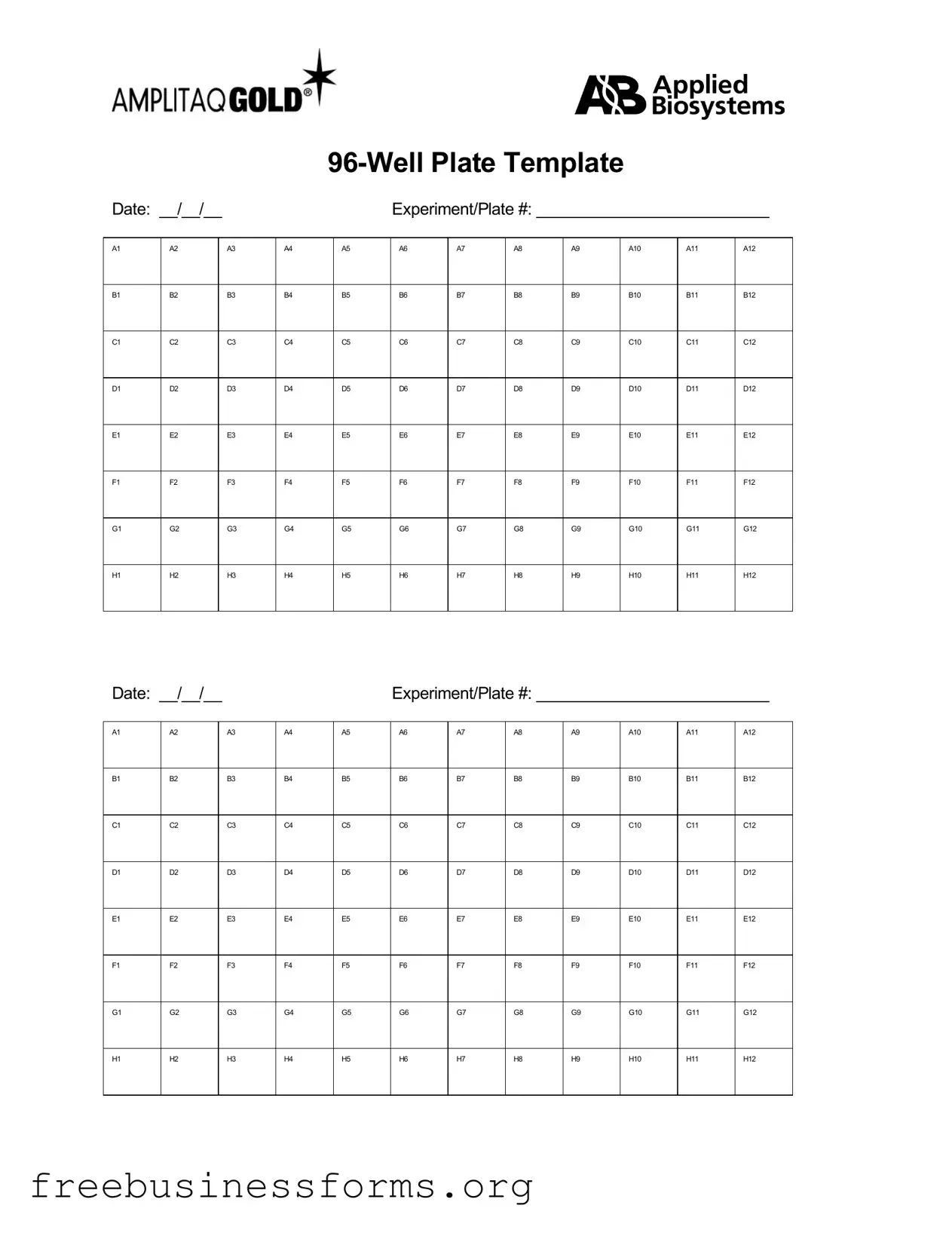The 96 Well form is a critical tool widely utilized in various scientific and research applications, particularly in the fields of biology and chemistry. This form is designed to accommodate a standard format that allows researchers to conduct experiments efficiently and effectively. Each of the 96 wells can hold samples, reagents, or other substances, facilitating high-throughput screening and analysis. The layout of the form is typically organized into rows and columns, enabling easy identification and tracking of samples. Researchers appreciate the versatility of the 96 Well form, as it can be employed in diverse settings, ranging from academic laboratories to industrial research facilities. Additionally, the form supports various types of assays, including enzyme-linked immunosorbent assays (ELISA), polymerase chain reactions (PCR), and cell culture applications. By providing a standardized method for sample handling, the 96 Well form enhances reproducibility and accuracy in experimental results, which is essential for advancing scientific knowledge and innovation.

